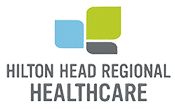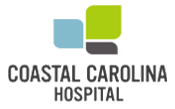Cleft Lip & Cleft Palate

Cleft lip and palate are among the most common congenital anomalies affecting children. When addressed early in a child's life, these conditions can be corrected with a high degree of both functional and cosmetic success.
In Depth
Cleft lip and cleft palate are birth defects that occur when a baby’s lip or mouth do not form properly. Together, these birth defects commonly are called “orofacial clefts”. These birth defects happen early during pregnancy. A baby can have a cleft lip, a cleft palate, or both.
Children with a cleft lip with or without a cleft palate or a cleft palate alone often have problems with feeding and talking. They also might have ear infections, hearing loss, and problems with their teeth.
The Centers for Disease Control and Prevention (CDC) recently estimated that each year 2,651 babies in the United States are born with a cleft palate and 4,437 babies are born with a cleft lip with or without a cleft palate. Cleft lip is more common than cleft palate. Isolated orofacial clefts, or clefts that occur with no other birth defects, are one of the most common birth defects in the United States. About 70 percent of all orofacial clefts are isolated clefts.
Cleft Lip
The lip forms between the fourth and seventh weeks of pregnancy. A cleft lip happens if the tissue that makes up the lip does not join completely before birth. This results in an opening in the upper lip. The opening in the lip can be a small slit or it can be a large opening that goes through the lip into the nose. A cleft lip can be on one or both sides of the lip or in the middle of the lip, which occurs very rarely. Children with a cleft lip also can have a cleft palate.
Cleft Palate
The roof of the mouth is called the "palate." It is formed between the sixth and ninth weeks of pregnancy. A cleft palate happens if the tissue that makes up the roof of the mouth does not join correctly. Among some babies, both the front and back parts of the palate are open. Among other babies, only part of the palate is open.
Causes & Risk Factors
Just like the many families affected by birth defects, CDC wants to find out what causes them. Understanding the risk factors that can increase the chance of having a baby with a birth defect will help us learn more about the causes. CDC currently is working on one of the largest studies in the United States to understand the causes of and risk factors for birth defects. This study is looking at many possible risk factors for birth defects, such as orofacial clefts.
The causes of orofacial clefts among most infants are unknown. Some children have a cleft lip or cleft palate because of changes in their genes. Cleft lip and cleft palate are thought to be caused by a combination of genes and other factors, such as exposures in the environment, maternal diet, and medication use.
Recently, the CDC reported on important findings about some factors that increase the risk of orofacial clefts:
- Smoking―Women who smoke during pregnancy are more likely to have a baby with an orofacial cleft than women who do not smoke.
- Diabetes―Women with diabetes diagnosed before pregnancy have been shown to be an increased risk of having a child with a cleft lip with or without cleft palate.
CDC continues to study birth defects, such as orofacial clefts and how to prevent them. If you smoke or have diabetes, and you are pregnant or thinking about becoming pregnant, talk with your doctor about ways to increase your chances of having a healthy baby.
Diagnosis
Orofacial clefts sometimes can be diagnosed during pregnancy, usually by a routine ultrasound. Most often, orofacial clefts are diagnosed after the baby is born. However, sometimes minor clefts (e.g., submucous cleft palate and bifid uvula) might not be diagnosed until later in life.
Treatments
Services and treatment for children with orofacial clefts can vary depending on the severity of the cleft; the presence of associated syndromes or other birth defects, or both; and the child’s age and needs. Surgery to repair a cleft lip usually occurs in the first few months of life and is recommended within the first 12 months of life. Surgery to repair a cleft palate is recommended within the first 18 months of life.5 Many children will need additional surgeries as they get older. Although surgical repair can improve the look and appearance of a child’s face, it also may improve breathing, hearing, speech, and language. Children born with orofacial clefts also might need different types of treatments and services, such as special dental or orthodontic care or speech therapy
The information provided here is not intended as a substitute for professional medical advice, diagnosis, or treatment. It is provided to help you communicate effectively with your oral and maxillofacial surgeon. Always seek the advice of your oral and maxillofacial surgeon regarding an oral health concern.
© 2013 Division of Birth Defects and Developmental Disabilities, NCBDDD, Centers for Disease Control and Prevention.
• • •











